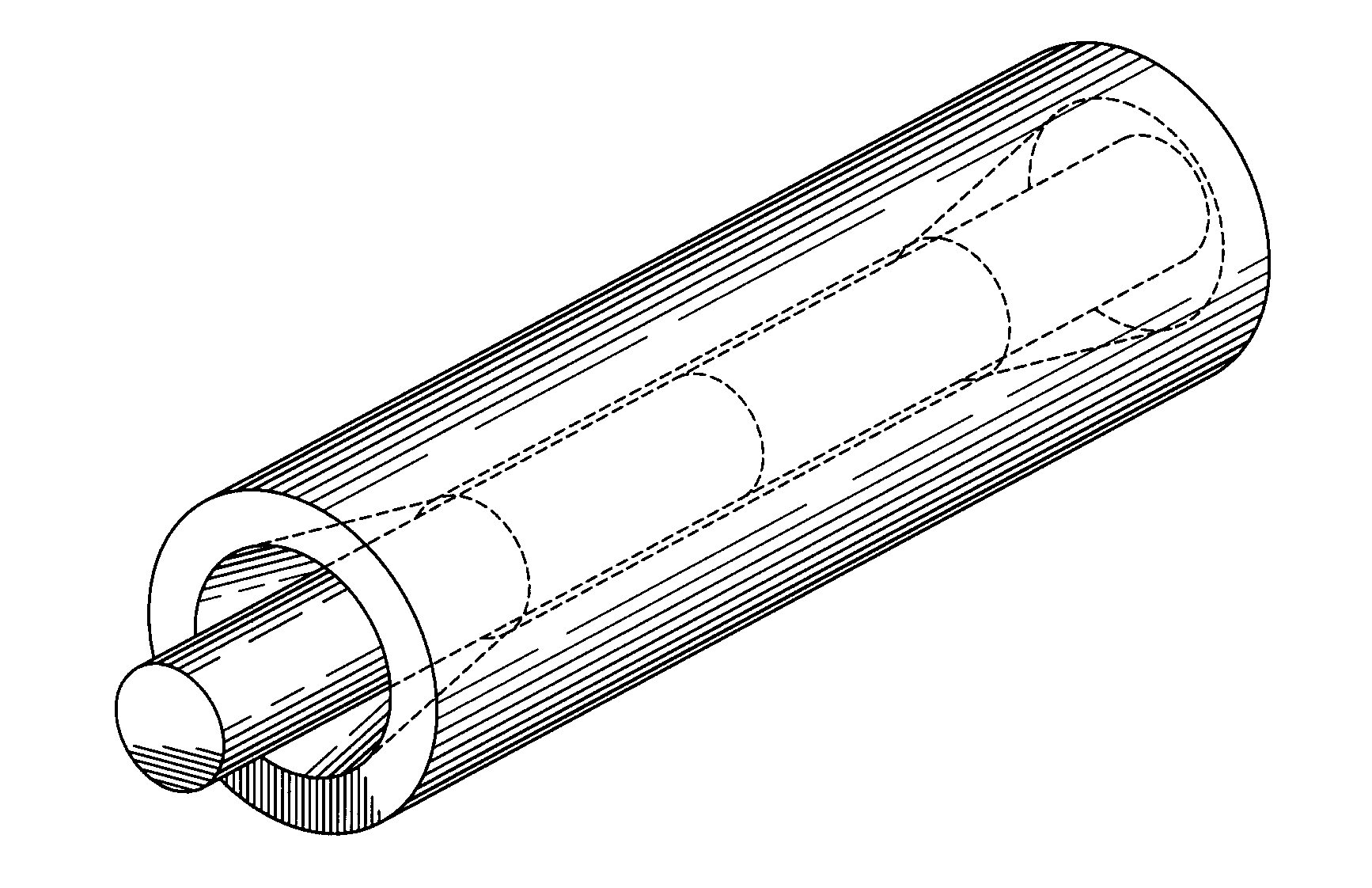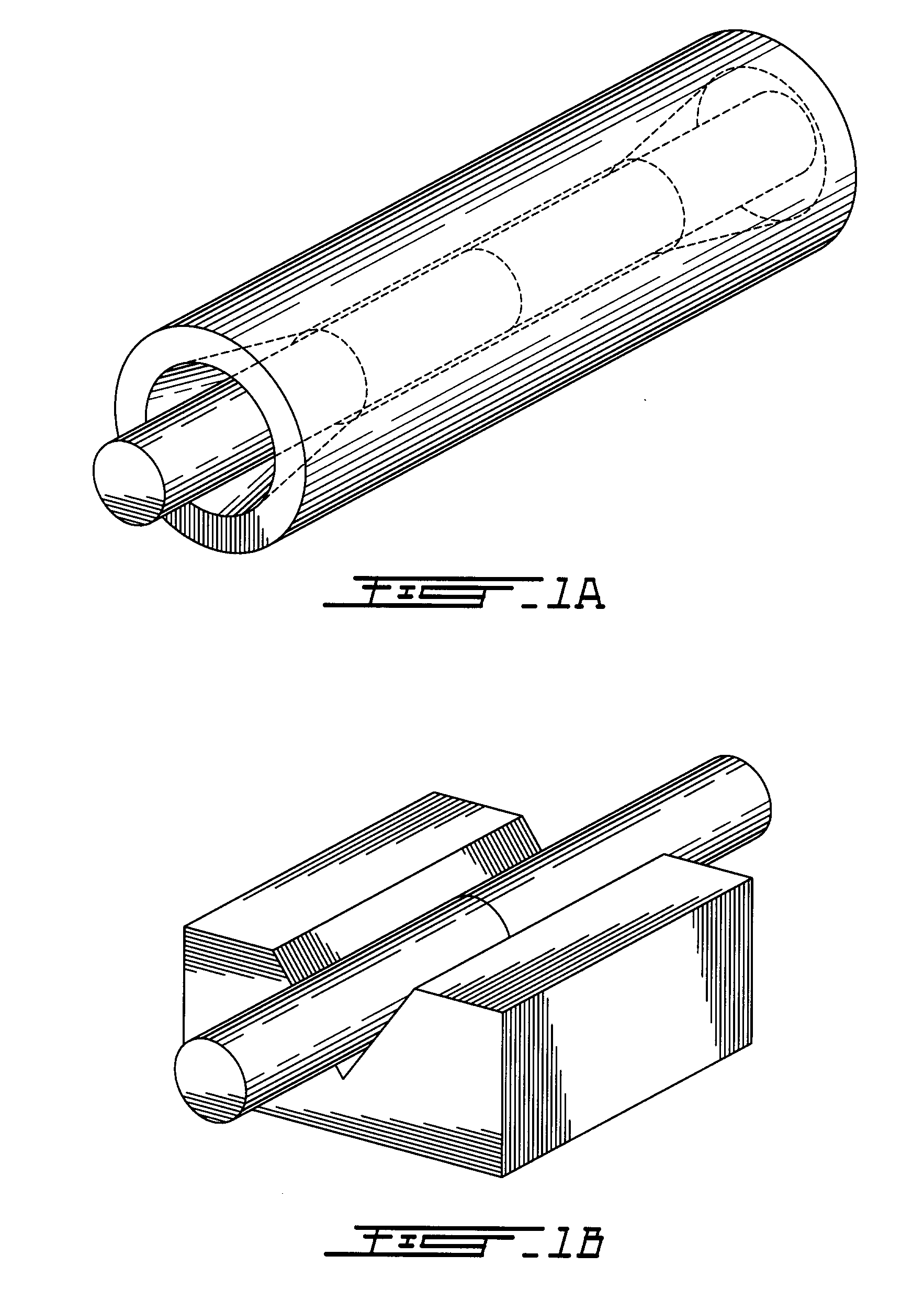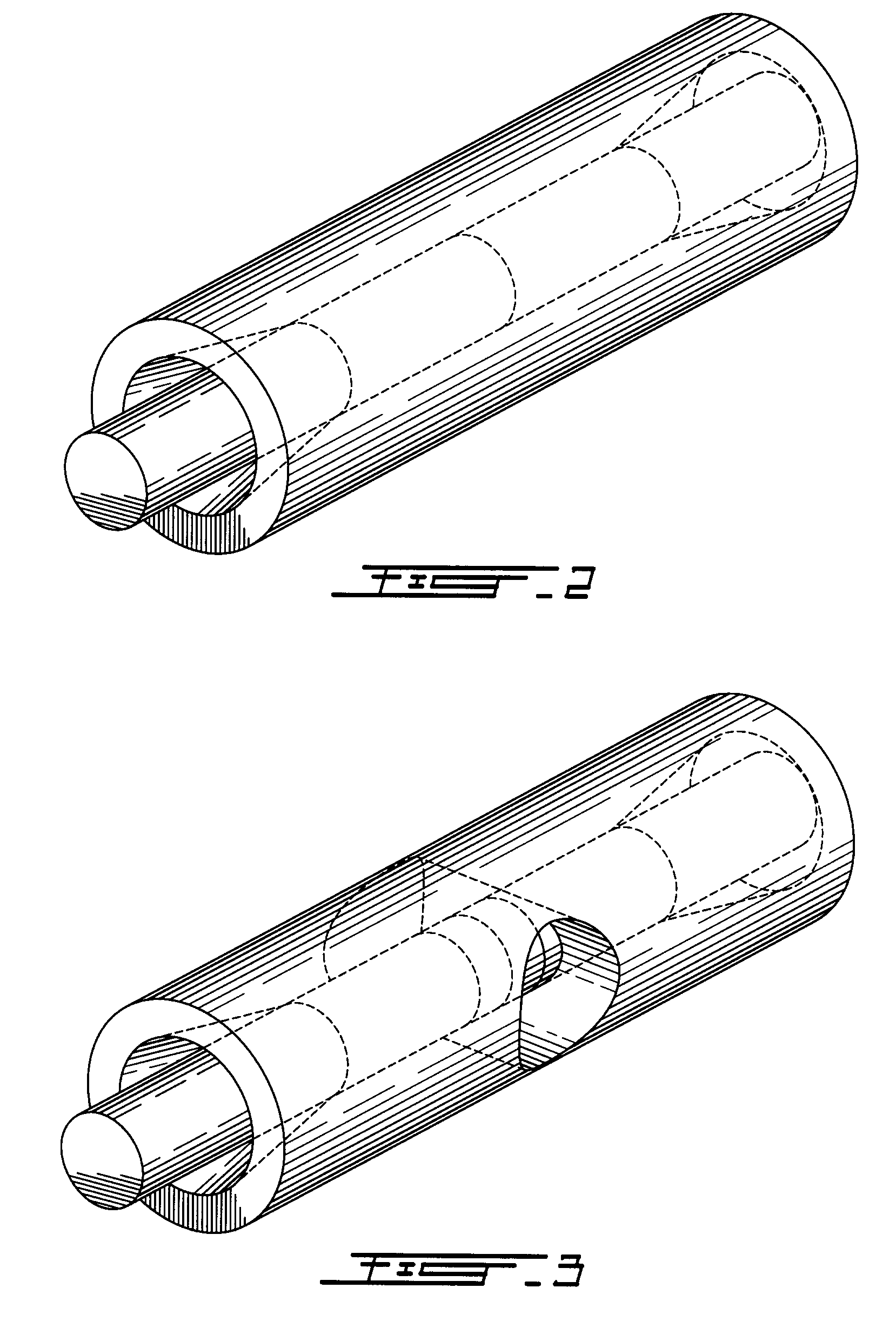Method of fusing optical fibers within a splice package
a technology of optical fibers and splices, applied in the field of splicing and fusing optical fibers, can solve the problems of inability to compensate for small misalignments, small misalignments, and other connection technologies such as mechanical splices or connectors may have higher losses, and achieve the effects of high thermal conductivity, increased mechanical strength, and increased melting poin
- Summary
- Abstract
- Description
- Claims
- Application Information
AI Technical Summary
Benefits of technology
Problems solved by technology
Method used
Image
Examples
Embodiment Construction
[0031]Mechanical fiber optic splices are ferrules or V-grooves as shown in FIGS. 1a and b respectively. The cylindrical fiber receiving passage in FIG. 1a is shown open and can be closed by mechanical action. The alignment using V-grooves can be very precise, leaving error strictly due to fiber tolerances such as core diameter, cladding diameter, core eccentricity, and core ellipticity. The present quality of the fibers makes it possible to achieve very good transmission (better than 0.1 dB optical loss) by passive alignment in V-grooves. Low cost splicing equipment, i.e. equipment without mechanized alignment, uses V-grooves to prealign the fiber ends before fusion. However, the quality of fusion for those machines is lesser than for the mechanized alignment machine because, not one but two prealigned V-grooves must be used, and they are typically more than 1 cm apart. Thus, there can be misalignment errors. Furthermore, the fibers must be held in the V-grooves with mechanical clam...
PUM
| Property | Measurement | Unit |
|---|---|---|
| diameter | aaaaa | aaaaa |
| melting point | aaaaa | aaaaa |
| radial pressure | aaaaa | aaaaa |
Abstract
Description
Claims
Application Information
 Login to View More
Login to View More - R&D
- Intellectual Property
- Life Sciences
- Materials
- Tech Scout
- Unparalleled Data Quality
- Higher Quality Content
- 60% Fewer Hallucinations
Browse by: Latest US Patents, China's latest patents, Technical Efficacy Thesaurus, Application Domain, Technology Topic, Popular Technical Reports.
© 2025 PatSnap. All rights reserved.Legal|Privacy policy|Modern Slavery Act Transparency Statement|Sitemap|About US| Contact US: help@patsnap.com



